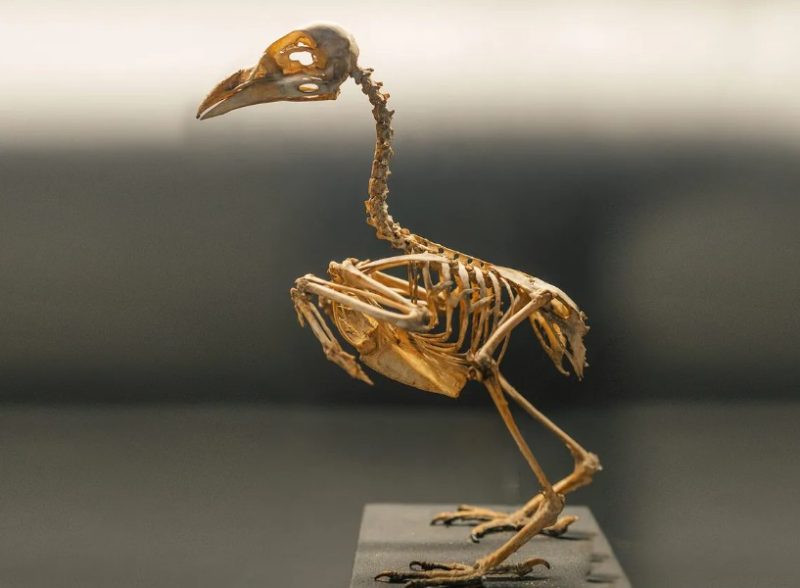Birds are fascinating creatures with unique adaptations that allow them to soar through the skies. One of the most intriguing aspects of avian biology is their skeletal system. Many people wonder: do birds have bone marrow like mammals? The answer is more complex than a simple yes or no.
Let’s explore the structure of bird bones, the presence of bone marrow, and how their skeletal system supports flight.
The Structure of Bird Bones

Bird bones are not like those of mammals. They have evolved to be lightweight while still providing the necessary support for movement and survival. Understanding the composition of bird bones is key to answering the question about bone marrow.
Hollow Bones: A Key Adaptation for Flight
One of the most well-known adaptations in birds is their hollow bones. Unlike the dense bones of mammals, many of a bird’s bones are pneumatised, meaning they contain air sacs. These air sacs are extensions of the respiratory system, reducing weight while maintaining strength.
Dense Bones in Certain Birds
Not all bird bones are hollow. Some species, such as diving birds like loons and penguins, have denser bones. These bones help them stay submerged and navigate efficiently underwater. In such birds, bone marrow is more prominent compared to species with predominantly hollow bones.
Do Birds Have Bone Marrow?
Yes, birds do have bone marrow, but not in the same way as mammals. The distribution and function of bone marrow in birds vary depending on the type of bone.
Bone Marrow in Pneumatic Bones
In hollow, pneumatic bones such as the humerus (wing bone) and some vertebrae, bone marrow is either minimal or absent. Instead of marrow, these bones are filled with air spaces connected to the bird’s respiratory system, making them lighter for flight.
Bone Marrow in Non-Pneumatic Bones
Birds do have bone marrow in their non-pneumatic bones. These bones, such as the femur, tibiotarsus, and some parts of the pelvis, contain marrow similar to that of mammals. The function of marrow in these bones is crucial for blood cell production, just as in mammals.
The Role of Bone Marrow in Birds
Bone marrow plays an essential role in birds, particularly in blood cell formation and calcium storage.
Blood Cell Production
In birds, bone marrow is responsible for producing red and white blood cells, which are essential for oxygen transport and immune function. However, because some bones are pneumatised, birds rely on fewer bones for blood cell production compared to mammals.
Medullary Bone: A Unique Avian Adaptation
Birds, particularly females, possess a specialized type of bone marrow called medullary bone. This bone forms within the cavities of certain long bones and serves as a calcium reservoir for eggshell formation. It is a temporary structure, appearing during the reproductive period and being reabsorbed after egg-laying is complete.
How Bird Bones Differ from Mammal Bones
While birds and mammals share some similarities in skeletal structure, there are key differences that set them apart.
Lightweight Yet Strong
Bird bones are structured to be as light as possible while still providing strength. The internal struts and trabeculae (thin bone walls) help maintain the rigidity needed for flight.
Fusion of Bones
Many bird bones are fused together to provide stability. For example, the furcula (wishbone) helps strengthen the chest for wing movement, and the synsacrum (fused vertebrae) provides rigidity during flight.
Rapid Bone Regeneration
Birds can regenerate bone tissue quickly, especially during the reproductive season when calcium demand is high. This ability helps compensate for the temporary use of medullary bone.
The Evolutionary Advantage of Bird Bone Structure
Birds evolved their unique skeletal system over millions of years, balancing strength and lightness. Their bone marrow adaptations reflect these evolutionary pressures.
Why Some Bones Retain Marrow
Birds need to produce blood cells just like mammals, which is why some bones retain bone marrow. However, reducing the number of marrow-filled bones helps make birds more efficient flyers.
The Role of Pneumatic Bones in Flight
The presence of air sacs in certain bones aids in respiration, allowing birds to take in more oxygen and sustain high-energy activities like flying.
Birds vs. Mammals: Bone Marrow Comparison
Let’s compare the function of bone marrow in birds and mammals:
Feature |
Birds |
Mammals |
|---|---|---|
Bone Type |
Hollow (pneumatic) & solid bones |
Solid bones |
Bone Marrow |
Present in non-pneumatic bones |
Present in all long bones |
Blood Production |
Limited to certain bones |
Occurs in many bones |
Special Adaptations |
Medullary bone for calcium storage |
No medullary bone |
Common Myths About Bird Bones
Myth 1: All Bird Bones Are Hollow
While many bird bones are pneumatised, not all of them are hollow. Birds like ostriches and penguins have more solid bones to support their specific lifestyles.
Myth 2: Birds Have No Bone Marrow
Birds do have bone marrow, but only in non-pneumatic bones. The marrow in these bones plays an essential role in blood cell production and calcium storage.
Myth 3: Bird Bones Are Fragile
Despite being lightweight, bird bones are quite strong. Their internal structure helps them withstand the stresses of flight and movement.
Conclusion
So, do birds have bone marrow? The answer is yes—but only in specific bones. While pneumatic bones lack marrow and are filled with air sacs, non-pneumatic bones contain marrow essential for blood cell production. Additionally, female birds have medullary bone, a specialized adaptation for calcium storage during egg production.
Understanding these differences helps us appreciate the incredible adaptations birds have developed to master the skies. Their unique skeletal system is a testament to the balance between strength and efficiency, making them one of nature’s most remarkable creatures.






